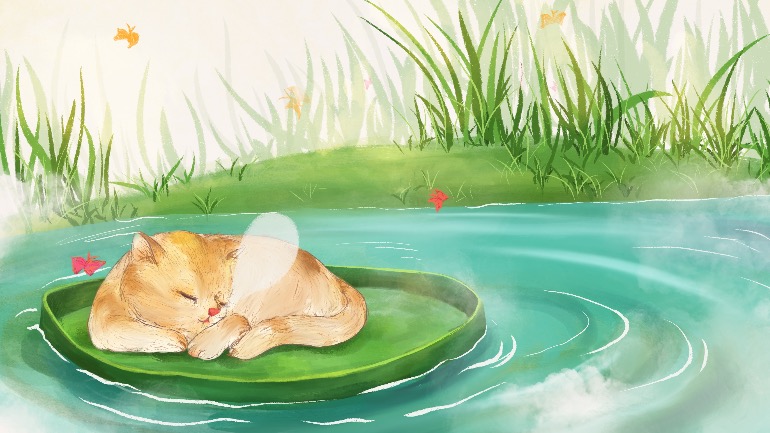Some people do not see the point of preparing for future lives because they are not feeling any obvious distress right now. Yet worrying about the well-being in their old age, they will do all they can to make money even without concerns for karma and retributions sometimes. This is very foolish.
KHENPO'S BLOG
The most important and the key difference between Buddhism and non-Buddhism lie in taking refuge in the Three Jewels.
To learn Buddhism is to learn wisdom and compassion. To attain Buddhahood means the manifestation of the inherent wisdom and compassion of Buddha-nature after all the obscurations have been purified. That is all it means.
- Quote from The Right View, "Buddhism—the Definition"
This is because the attainment of Buddhahood is the ultimate way of freeing all sentient beings from suffering.
At the same time, we should think: although all that is defiled or tainted is the cause of suffering, I enjoy a quiet and relatively happy life now because of the merit I accumulated in past lives; this happiness does not come by easily. The sutras state that true and unparalleled good fortune in the world is to be able to live a relatively good life and have the opportunity to listen, reflect, and practice the Dharma at the same time. It is exceptionally rare to find people in samsara who fulfill both conditions.
- Quote from Are You Ready For Happiness? Don't Let the Paper Tiger Scare You Off, "How to Face Happiness"
No sentient being is in samsara voluntarily other than certain bodhisattvas. Although some people, after being hypnotized, claim that they purposely took rebirth in samsara, it may just be a lie or their imagination. The fact is that none of us is here by choice. Why do we keep coming back to samsara? It is due to all the defilements caused by karmic power. Like growing crops, seeds do not plan what kind of fruit to yield, or any at all. Given the right temperature and humidity, fruit will grow naturally. Similarly, when people are in the bardo state, they just aimlessly drift around, not knowing specifically what to do. Most of them end up taking rebirth, as the cause for rebirth has long been committed. And with all the necessary conditions fall into place, they have no choice but to be reborn again. If one could choose, why would anyone choose to be reborn as an ox or a horse or to live in misery?
- Quote from The Right View, "The Four Noble Truths—the Path Out of Samsara"
Let us use taking refuge in the Three Jewels as an example. No matter what the motivation is, taking refuge prevents obstacles caused by both human and non-human beings, purifies a great deal of negative karma and brings health and longevity. These are the benefits inherent in taking refuge. Also, when we run into difficulty or experience pain, the normal thing to do is to pray to our guru and the Three Jewels, as all Buddhists should. It is not as if we oppose completely doing good for the sake of health or holding pujas for longevity and wealth. However, to direct every practice simply to gain worldly benefit is wrong. Liberation from samsara alone should be the ultimate goal for us taking up any practice.
The Buddha’s primary goal of teaching was to communicate precisely the doctrine of the Three Dharma Seals to the listeners. Failing this, the teaching would have been pointless. What made the Three Dharma Seals so important? The answer is in the sutras. A disciple once asked the Buddha, “How can the real teachings be distinguished if the non-Buddhists try to deceive with their false version after you, The Blessed One, pass into nirvana?” The Buddha answered, “Any teaching, as long as it espouses the principles of the Three Dharma Seals, can be considered Buddhist teaching; otherwise, it is not Buddhist teaching.” The fact that the Buddha always emphasized the key points in his transmissions should explain why so much importance has been attached to the Three Dharma Seals.
- Quote from The Right View, "Buddhism—the Definition"
But it takes more than just practice to arouse bodhicitta. Other supportive measures are also needed, such as learning the merit of bodhicitta, studying and contemplating the relevant Mahayana texts, accumulating the most possible merit, etc. Without doubt, the most important is to cultivate the Four Immeasurables—loving-kindness, compassion, altruistic joy and equanimity. If we can practice in this manner, arousing bodhicitta would not be a difficult task after all. For people who do not practice, it is indeed very difficult. Comparatively, those who are diligent will not find it quite so hard. In any case, all we Dharma practitioners must get pass this one hurdle before going further down the path to liberation.
- Quote from The Right View, "The Three Supreme Methods"











